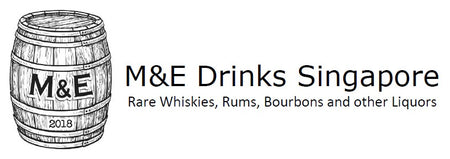Whisky Tasting Parties...Tips & Suggestions

...couldn't quite remember the theme of this particular tasting!
Let's say you opened a few bottles of whiskies because you like diversity, but remembered what they say about whiskies oxidizing faster once opened, and that it's best to finish the whole bottle soon once it goes below half full. Or you have decided to meet up with mates and want to do whisky "potluck". Or maybe you are just fabulously rich and generous and want to give your whisky buddies a night they won't forget...What should you do? Organize a tasting party of course!
After you've cleaned and dried your nosing glasses, decided on the best food to go with whisky (spicy beef pizza, definitely), got your (very lucky) buddies to RSVP, the next and most fun decision to make is: WHICH WHISKIES? Below please find our suggestions in case you need a few pointers:
1. Organize around a region, or do region vs. region
Any characteristic that your whiskies have in common, or which sets them apart, can be the Theme. You can do within a Region, or a region by region comparison. This may throw out some surprises, for e.g., not all Islays are peated, and not all Speysides are unpeated. It might be a lot of fun to taste blind and see who can identify an unpeated Islay amongst the Speysides. This may also help us pick up other (more subtle) characteristics that a specific region, or distillery, may have. Or you can go big geographically, e.g., compare sherry cask aged Scotch with a sherry cask aged Japanese. The possibilities are endless.
2. Organize around a horizontal, or vertical
A horizontal may be whiskies from different distilleries of the same (maturation) age, while a vertical can be different age statement bottlings (or vintage) from the same distillery. For whiskies, a variation on the horizontal theme might be to have whiskies from the same distillery but finished using different casks (eg, Bourbon, Sherry, Rum, Madeira or even Beer!). Distilleries like Glenmorangie would be particularly suitable due to their extensive offerings of different wood finishes. Another fun one which we enjoyed is the Chichibu regular bottle offerings, though in this case, there is grain and vattings of old Hanyu thrown into the mix... Again, the idea is to control for (make the same or similar) certain parameters or properties of the bottles being compared, for the ability to attribute differences between bottles to some other parameter being compared. Using the Glenmorangie example, as the new-make spirit presumably comes from the same source, the differences in taste profile can be attributed mainly to the different wood finishing if the whiskies were aged for the same duration (of course, the actual case is more complex, as there may be vatting and batch differences, but the wood should play a major role).
3. Official bottling vs. independent bottling
Some distilleries bottle almost all their production themselves (ie, official bottlings), while others have many Independent Bottler (IB) versions in the market. As explained in this page, IBs select and buy whiskies directly from the distillery and do their own aging and / or bottling. Tasting alongside the officials, an IB bottling may show a different or similar style, sometimes reflecting the taste preferences of the IBs themselves. IBs can also be compared with one another for extra fun. The good news is, if you happen to prefer an IB bottle, you can usually get it cheaper than the official bottling!
4. Come as you are (see pic)
Of course, you can decide "the heck with it, I'll bring whatever I like!" Your tastebud might be confused, but if you enjoy it, why not? Just remember (to quote our nephew): Sharing = Double the Fun!
